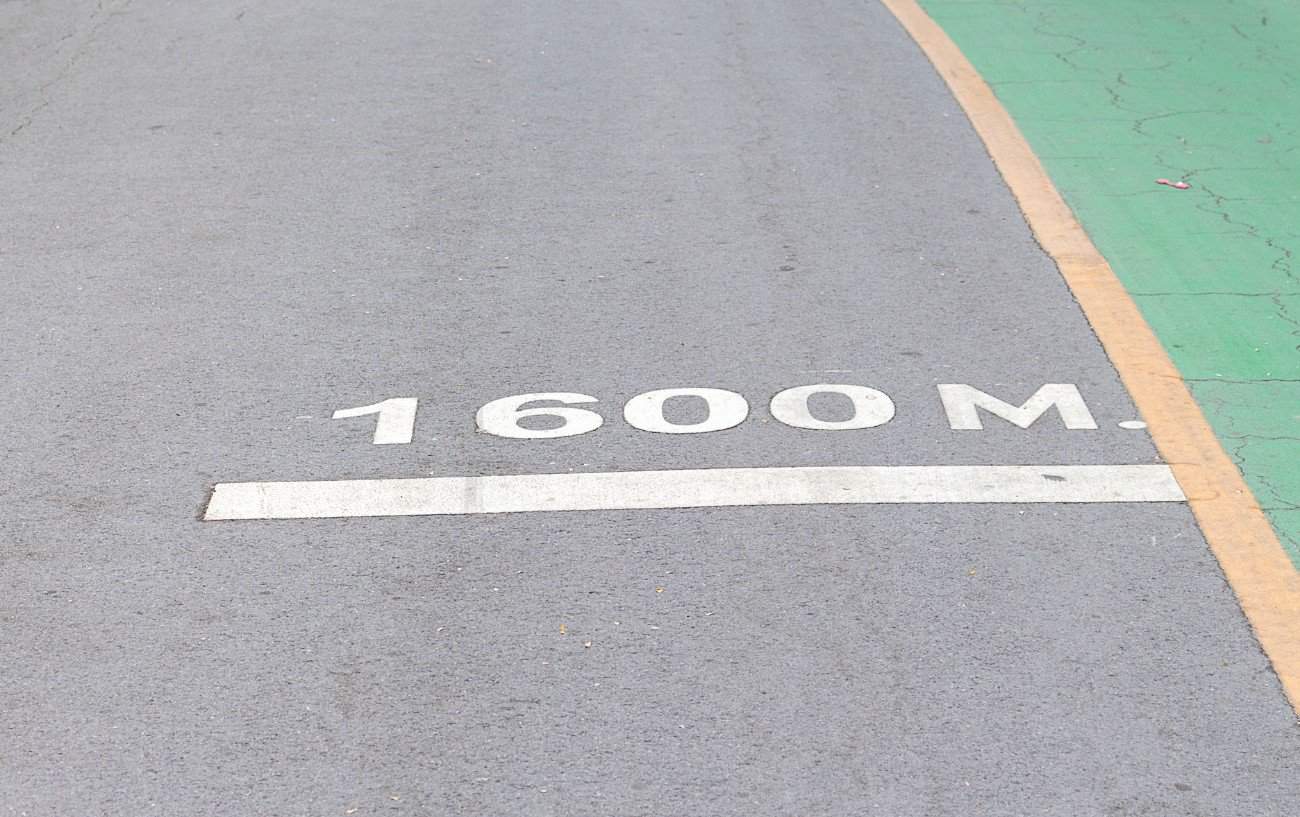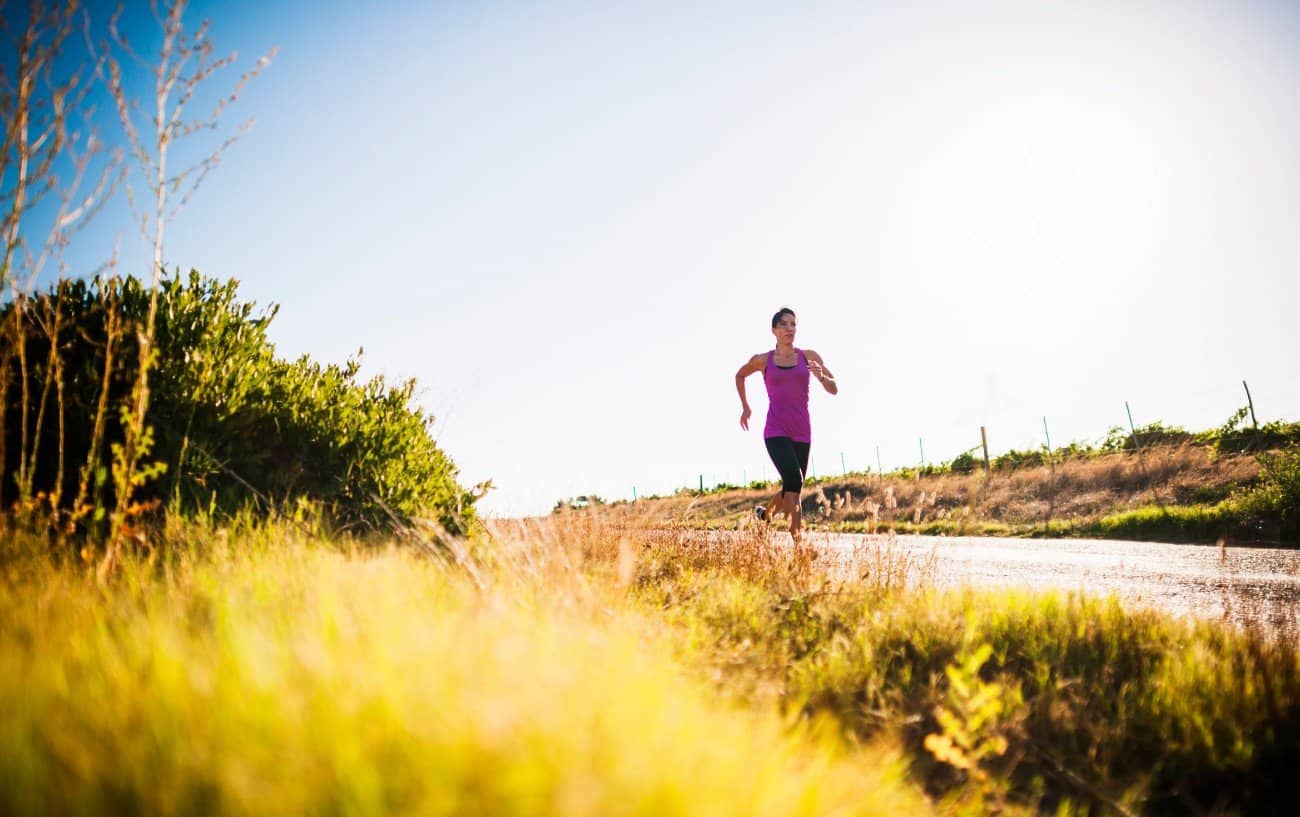As a certified running coach, one of the most common questions runners ask me is: “How fast should I be running?”
Generally, for runners following a training plan to prepare for a race, this question is looking for advice for their race pace or an anticipated finish time based on their current fitness level.
Beginners or recreational runners who are new to a training program may even have questions about their daily training pace or their ideal running pace during workouts as they follow their training plan.
Running the “right race paces“ or “right training paces“ in your races and workouts is always the goal, but it isn’t necessarily easy to determine how fast you should be running.
Jeff Galloway‘s magic mile calculator uses a one-mile time trial time to help you predict realistic goals for race paces and finish times based on your current fitness level.
What’s great about the magic mile calculator is that you can determine 5K pace, 10K pace, half-marathon pace, and marathon pace by running only a mile.
In this guide to the magic mile calculator, we will discuss the magic mile calculation, how to perform the magic mile test, and how to calculate your race paces and finish times based on the magic mile formula.

What Is the Magic Mile Calculator?
Jeff Galloway designed the magic mile calculator to predict race performances based on a one-mile time trial.
He created the magic mile formula after compiling hundreds of race finish times and comparing the race paces that led to those finish times to the training paces in workouts after working with more than 300,000 runners for more than 40 years.
He discovered that you can predict running paces for longer distances based on a one-mile time trial run at a good, hard effort.
This is useful for runners who are working through a training plan in the build-up to a race because you can adjust your training paces and set realistic goals for your long run pace, interval workouts, and race day performances as your current fitness level changes throughout the duration of the training program.
Plus, because the magic mile race time predictor is only a one-mile running test, you can perform the magic mile time trial every 2-4 weeks or so without requiring significant recovery afterward.

How Do You Do the Magic Mile Test?
You need to perform the magic mile test properly to improve the accuracy of the magic mile calculator.
Here are the steps for performing the 1-mile time trial:
How To Perform The Magic Mile Test
- Warm up with light jogging for a mile at an easy pace.
- Do 3 to 6 accelerations or strides (50-75 meters) to wake up your neuromuscular system and prepare for running faster.
- Run as fast as possible, pushing yourself at maximum effort for the entire mile test. Make sure to pace yourself evenly for each quarter mile. The more even your quarter mile splits, the better. You should feel like you would not be able to run more than another 100 meters at the same running speed after finishing the last lap, but you also should not push yourself to complete exhaustion or to the point of throwing up after finishing. It should feel like a hard effort, but not like the all-out race day of your life.
- As soon as you finish the one mile run, keep walking for at least five minutes and then cool down with 1 to 6 miles at an easy running pace.
Note that if you are using the run/walk method, you can still do the magic mile test, and you should use the walk breaks suggested by Jeff Galloway for your anticipated one-mile race pace.
How Fast Should I Run In a Race?
Here is how to calculate your race times based on your magic mile time trial:
- 5K pace: Add 33 seconds to your magic mile time
- 10K pace: Multiply your magic mile time by 1.15
- 10 mile pace: Multiply your one-mile time by 1.175.
- Half marathon pace: multiply your magic mile time by 1.2.
- Marathon pace: multiply your magic mile trial time by 1.3.
You can also go to the Jeff Galloway website and enter your Magic Mile time into the Magic Mile pace calculator to determine your running paces.

Does the Magic Mile Race Formula Work?
There are a few assumptions or requirements in order for the magic mile calculation to be a valid prediction of your potential race times for longer distances:
#1: You Train Properly
You need to follow a sound training plan and perform training appropriate for the target race distance and goal finish time.
Of course, running a one-mile time trial is much easier in some ways than getting through a full 13.1 miles at your goal half marathon pace or 26.2 miles at your goal marathon pace.
In other words, finding out that your half marathon pace should be 8:45 minutes per mile based on your magic mile time formula is only going to be accurate and valid if you follow a half marathon training plan.
You will need to get in your long runs, tempo runs, overall mileage, and the necessary speed work to prepare you for the half marathon distance and the predicted half marathon pace.

#2: You Pace Yourself Appropriately
Whether during your training runs or on race day, the magic mile running pace projections are only accurate if you are pacing yourself properly for your race distance.
Jeff Galloway championed the run-walk-run method (also called the run/walk method), so if you are using the Galloway run-walk-run method for a half marathon or marathon, you are supposed to take the walk breaks as provided for your goal time.
If you are going to run the whole race without stopping, you should also be pacing yourself appropriately for the race distance.
#3: Race Day Isn’t Super Hot
The accuracy of the magic mile calculator also decreases if the race day temperatures are above 60°F, as running in the heat can impact endurance, heart rate, time to exhaustion, and thus potential running paces.
Therefore, according to Jeff Galloway, the magic mile race time predictor assumes that race day temperatures are below 60°F.
This doesn’t mean you can’t use the magic mile time to estimate race paces or finish times if you are doing a summer race, but you may need to adjust your projected finish time and race pace, especially for longer races.

As a running coach, I have the utmost respect for Jeff Galloway and I have been following his coaching career since I was 12 years old and started running competitively myself.
I think that the magic mile formula can be a great way to adjust your training paces and set realistic goals for races, but it also isn’t an exact science.
If you find that you have adjusted your long run pace and workout paces based on your one-mile time trial and you are feeling like you are not recovering well, seem to be overtraining, or have concerns about burnout, you should definitely dial back your training pace and listen to your body.
I usually recommend training by heart rate rather than setting a specific training pace.
Your heart rate is subject to fluctuations based on your recovery status, the environmental conditions, your hydration, and your overall health, so you can better heed the needs of your body while still running at the right training pace based on your current fitness level.
That said, I love using the magic mile calculations for setting realistic goals for race day and helping determine approximate race paces for interval workouts.
Periodically doing a one-mile time trial in your training is also a good way to gauge your fitness progress even if you aren’t planning to run longer races.
Have you tried it? How accurate were the magic mile formulas for your race times?
If you are looking for a marathon training plan to try out your magic mile results, check out our database:












